Nice trees improve curb appeal, can increase property values and cut cooling costs. The best time to plant trees and shrubs is during their dormant season–early spring or late fall. However, balled and burlapped trees can be planted almost any time with special care. Big shade trees are appropriate for your yard, but the narrow planting space between the street and sidewalks for “street trees” requires special consideration of mature size, rooting habit, etc.
The Appendix to our Builders Guide lists trees, shrubs, grasses and ground cover appropriate for our yards and some that are not permitted. Photos and specifics about lots of trees can be found at www.arborday.org. A great source of information can be found at www.treesaregood.com. Under “Tree Owner Information” you will find a “Tree Selection and Placement” pamphlet and the “Planting a Tree” pamphlet which gives step by step directions and sketches.
Be aware that if you plant a maple or other smooth thin-barked tree where it will have southwest sun exposure, you will need to wrap the trunk for the first few years with light colored tree wrap in the fall and remove the wrap in the spring to prevent frost crack (bark splitting) caused by bright daytime sun followed by freezing temperatures at night. If you want bright red fall color but not the extra care for young maples, you might choose black gum or red oak, both hardy native trees.
The Builders Guide required builders to initially plant 3” caliper street trees in the Estates section and 2” caliper elsewhere. Smaller replacement trees are now acceptable. You are encouraged, but not required, to plant the street tree species listed by street in the Addendum.
Although maples are listed, they are not really appropriate for street trees, per the Arkansas State Forestry Commission’s Patti Erwin because of the limited space for roots to support large trees. She recommended the following trees: Chinese Pistache, Willow Oak, and Lacebark Elm. Janet Carson, horticulture specialist for the University of Arkansas Cooperative Extension Services, recommends Chinese pistache; Ginkgo (male only), Linden (little leaf), or Japanese Zelkova for street trees.
Recommended Street Trees for Har-Ber Meadows
 | Willow Oak This Willow Oak is a fast-growing tree which can reach heights from 60′ to 100′. Unlike most oak trees, the willow oak has leaves shaped like willow leaves instead of the more typical oak leaf shape. It will turn shades of yellow, orange, and red in the fall. |  |
 | Lacebark Elm The Lacebark Elm is a fast-growing tree which can reach height from 40′ to 50′. They have a distinctive exfoliating bark with a mottled pattern. The oval-shaped leaves will turn shades of yellow, red, and purple in the fall. |  |
 | Chinese Pistache The Chinese Pistache grows to around 60′ tall. They are known for their fall colors which include red, yellow, and orange. The female trees produce fruit which attracts birds and squirrels and therefore can be messy. |  |
 | Ginkgo (male only) The Ginkgo tree can grow up to 110′ tall. They have distinctive fan-shaped leaves which turn saffron yellow in the fall. The female Ginkgo tree produces fruit which drops in the fall creating a mess and therefore, is not recommended. |  |
 | Linden (little leaf) A little-leaf Linden tree can grow to around 60′ tall. They are considered ornamental, flowering trees with leaves that are dark green on top and pale green on the underside. |  |
 | Japanese Zelkova The Japanese Zelkova can grow up to 80′ tall. They are naturally vase-shaped trees with slender leaves. Their fall colors range from yellow to burgundy. |  |
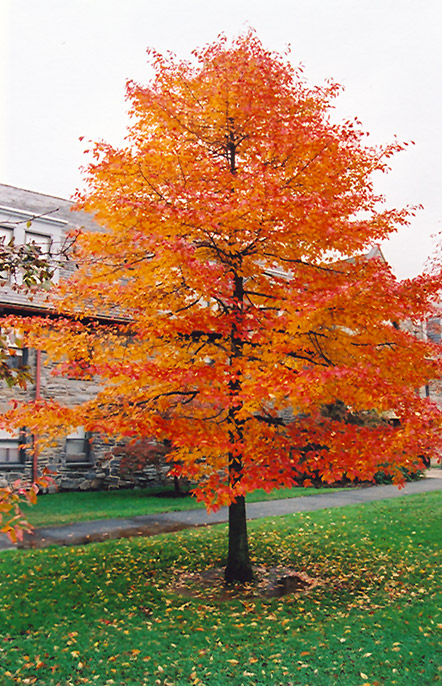 | Black Gum Black gum trees, also known as black tupelo, offer several advantages including stunning fall foliage, wildlife support, and adaptability to various soil conditions. They are a good choice for landscaping, especially for those seeking a native, low-maintenance tree with beautiful autumn colors and wildlife value. | 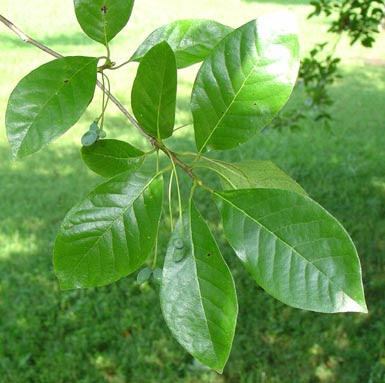 |
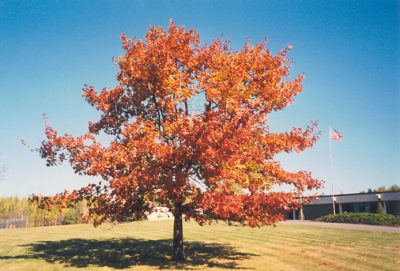 | Red Oak Red oak trees offer numerous advantages, including fast growth, a large canopy, abundant acorn production, and adaptability to various environments. They also play a vital role in supporting local ecosystems by providing food and shelter for wildlife | 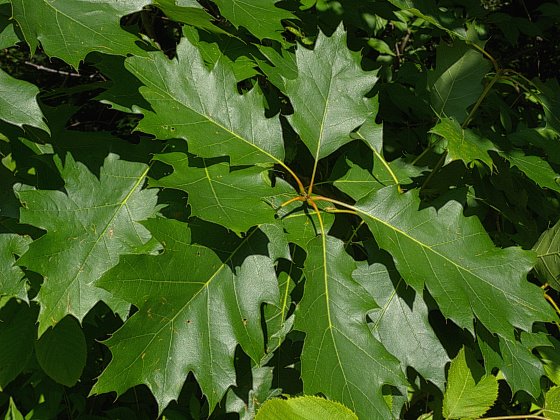 |
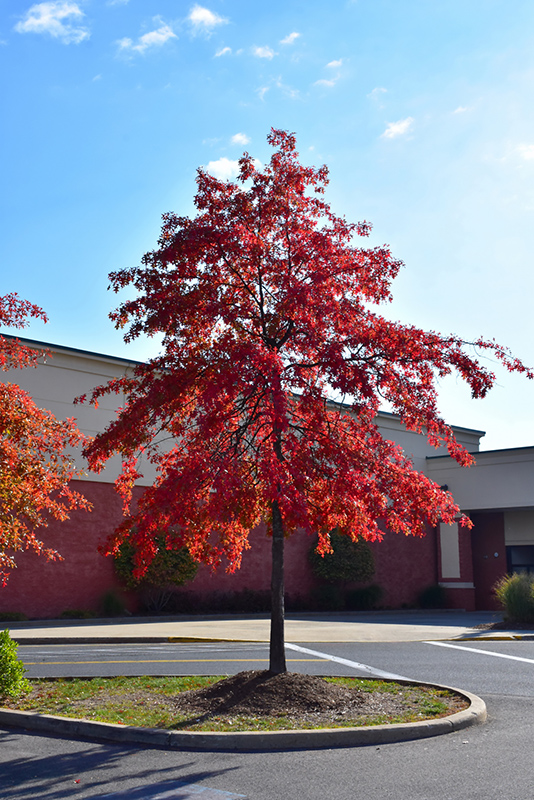 | Pin Oak Pin Oak trees are known for their fast growth, dense shade, and ability to tolerate various soil conditions, including heat and air pollution. They also provide valuable food and shelter for wildlife, particularly birds and squirrels, and their vibrant fall color adds aesthetic appeal. | 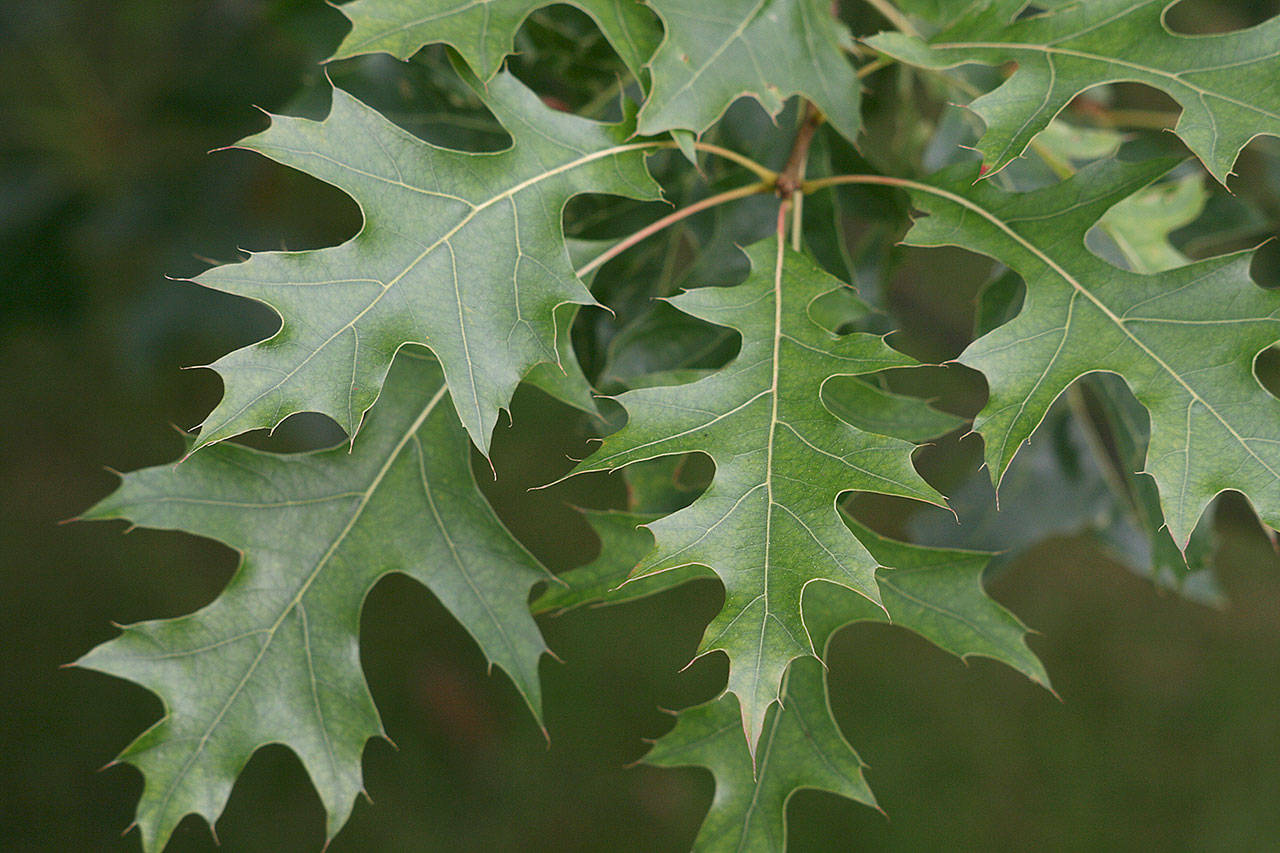 |
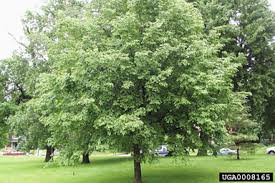 | American Hop Hornbeam The American hop hornbeam offers several advantages as a landscape tree. It’s known for its hardiness, attractive foliage, and ability to attract wildlife. It’s also relatively low-maintenance and adaptable to various soil conditions, including clay and drought. | 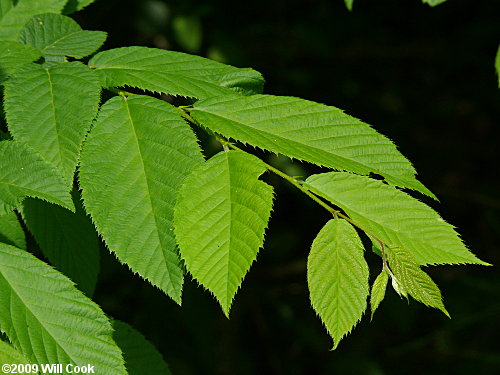 |
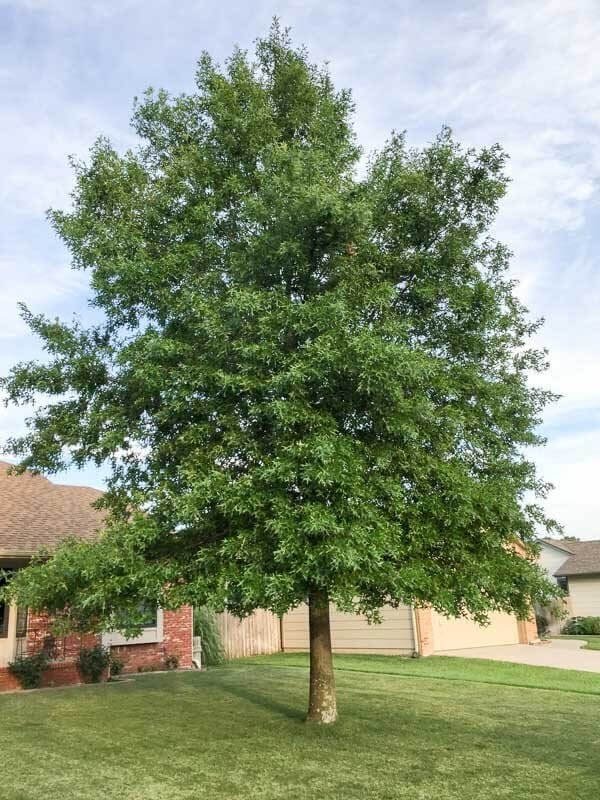 | Shumard Oak Shumard Oak trees offer several advantages, including attractive fall foliage, robust growth, and excellent wildlife habitat. They are known for their vibrant red and orange autumn colors, making them a beautiful addition to any landscape. | 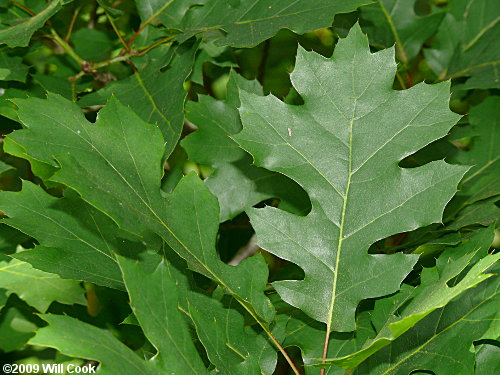 |
 | Maple (Not preferred due to limited space for root system) Maple trees can grow to a wide variety of heights. They have a distinctive leaf shape whose fall colors range from yellow to vibrant red. The main disadvantage of Maple trees, depending on the type, is their root system which can grow quite wide yet shallow. |  |
Before you dig, call 811 to learn what’s below ground. Trees are an investment with long-time returns if properly planted and cared for.